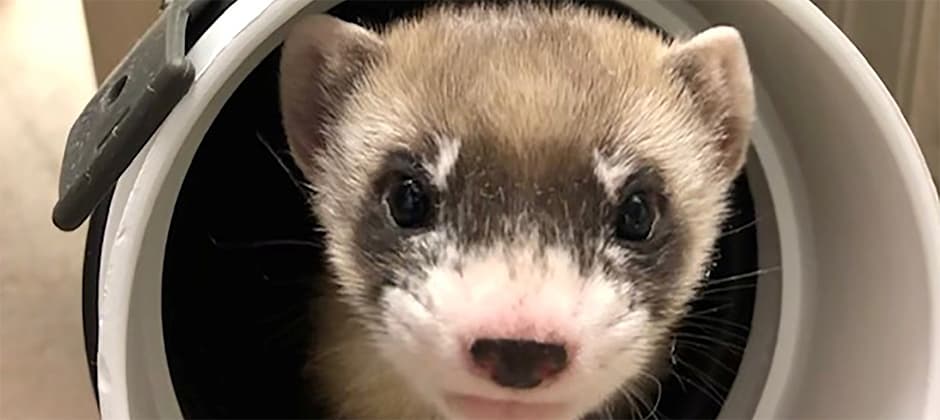Share this article
Report to assess black-footed ferret recovery
The Association of Zoos and Aquariums is preparing to issue a final report to the U.S. Fish and Wildlife Service assessing the black-footed ferret recovery and reintroduction program.
Following a series of workshops with federal and state agencies, tribes and others, the assessment is meant to recognize challenges to recovering the critically endangered ferret and to set forth steps to improve recovery efforts.
The assessment comes amid a mix of challenges and successes in the program. Apart from COVID-19 issues affecting the human side of the efforts, recovery efforts have been hampered by plague wiping out the prairie dogs they prey on. But biologists have been buoyed by the successful cloning of a black-footed ferret (Mustela nigripes), nicknamed Elizabeth Ann, from a wild ferret that died 30 years earlier.
“That’s phenomenal—something that wasn’t even fathomable when I started as a wildlife biologist,” said Stephen Small, USFWS assistant regional director of the Mountain-Prairie Region ecological services, at a hybrid in-person/online workshop Monday at the annual North American Wildlife and Natural Resources Conference in Spokane, Washington.
“It’s an exciting proof of concept,” said Paul Marinari, who leads the Smithsonian Conservation Biology Institute’s black-footed ferret program, “and we hope to incorporate her into the breeding population, and her kits … but cloning in and of itself is not a quick silver bullet to overall recovery.”
Black-footed ferrets were believed to be extinct before they were rediscovered in the wild in 1981. A recovery plan has worked to return them to the landscape across 12 western states. Ferrets have been released to 32 sites, but only about half are considered active after plague caused local ferret populations to blink out. The USFWS’ goal is to have 3,000 ferrets on the landscape, but persist bouts of plague have stymied the effort, and combating it is costly.
Supporters see the black-footed ferret as a charismatic species that can help the public support endangered species recovery and protections for grassland ecosystems, and they hope the apparent cloning success can offer a compelling tale.
“We’ve kept them from becoming extinct, but we’re not going to get them to a sustainable level without dollars in place,” said John Emmerich, chair of Black-Footed Ferret Friends, a group trying to raise funds to support reintroduction efforts. He estimates $30 million a year is needed to support USFWS efforts, primarily to combat plague.
In Colorado, where reintroduction efforts have been aided by incentives to ranchers, managers plan to evaluate the use of scent detection dogs to aid in ferret recovery this summer.
“There’s no better story than the story of the black-footed ferret,” said Dan Prenzlow, director of Colorado Parks and Wildlife and chair of the Black-Footed Ferret Recovery Implementation Team Executive Committee, “but it’s a story of ups and downs, ups and downs, ups and downs.”
Header Image: Elizabeth Ann, the first cloned black-footed ferret and first-ever cloned U.S. endangered species, at 50-days old. Credit: USFWS National Black-footed Ferret Conservation Center








